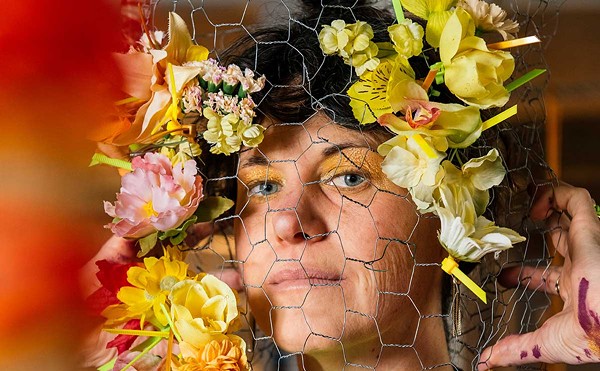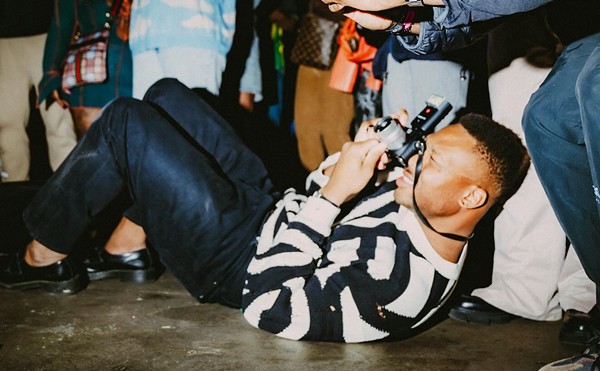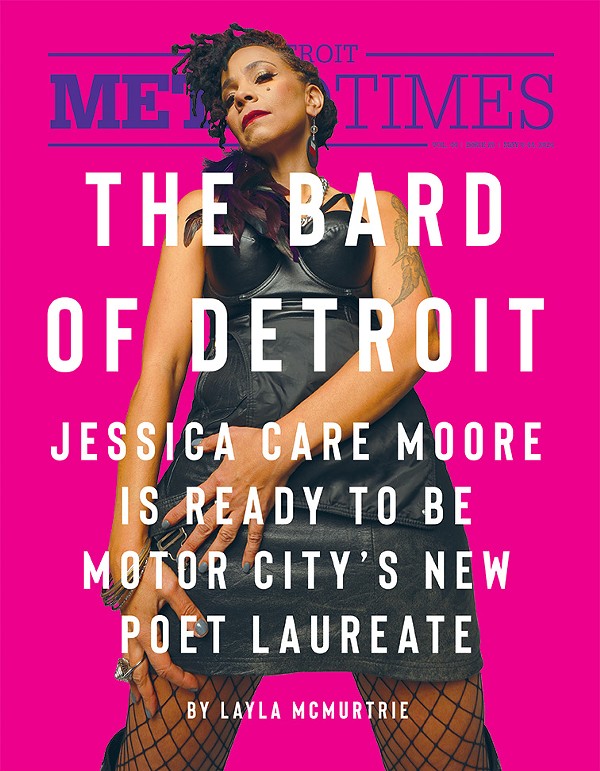It's been 17 years since Steve Panton, owner of Hamtramck's secret headquarters for contemporary art, the 2739 Edwin, made the move to Detroit from his native Nottingham, England. He's used his time here wisely, taking this unique (as in moving to the Motor City) opportunity — as are other Europeans (see Detroit unReal Estate Agency) these days — to really engage with the Motor City, more so than most who've seen it everyday most of their lives. Planton's first Detroit stint came back in 1992, when he was brought in on an 18-month software engineering contract. It was just enough time for an eye-opening crash course on the city. Six years later a corporate headhunter dragged him back. Panton put up little fight.
"We have to remember that in 1998 there was a shortage of people in Detroit," the demure aesthete says. "It seems incredible, doesn't it, that 10 years ago you couldn't find a person, for whatever kind of money, that would come work here?"
The engineer has roots that reach back into '70s British punk rock and dub scenes, wind around New Zealand's marvelous terrain and history, deep into Maori lore and up through 20th century art. Panton's the sort who sees the art in anthropology, but he's also a pragmatist: "Growing up in the east-Midlands, if you say 'Motown' people imagine a very different version of Detroit than the one that exists."
Romantic milieus aside, Panton is quick to point out that for those earning reasonable wages, there's an exceptional quality of life to be had. He's his own example.
"Where else can someone on a fixed salary finance a space like this?" he asks, reasoning that it's "a true phenomenon."
Panton had been casually interested in the arts for years before moving into and opening 2739 Edwin. He turned an extended journey through New Zealand's majestic terrain into a photo project, trying to capture its otherworldliness, that sublime quality that helped Peter Jackson bring Tolkien to life. When Panton moved here, the approach wasn't not much different.
"When I came to Detroit, like so many people, I started thinking, 'What the hell happened here?' So I started reading the history and taking photos, at first with the pure intent to create a dialogue with myself. I was trying to comprehend what was really going on here."
Upon some of his explorations, many of which he does on bicycle, Panton says he started to come across artists and galleries he'd been looking for. "I got to know Cheri Hendrick from Alley Culture [the long established gallery on Trumble on Willis], and we got talking about a few things," Panton says.
"Eventually, somehow, she saw some photos I had been taking of Detroit and set up an exhibition. So I kind of went from casual observer of the arts to having my stuff in a show just like that."
A concept that resonates with Panton involved investigating the non-rational relationships we make with physical places. "Even people who don't seem to form non-rational connections with other people tend to maintain non-rational connections with some sort of space," Panton says. "When I came to Detroit and first started taking photos, I was kind of taking classic wilderness photos in that I went looking for the spectacular, the sublime and the beautiful. Just how does the history of a place impact our emotional response to it?"
In wanting to meditate further on questions like these, coupled with a bit of self-admitted arrogance — the idea of wanting to create a space that'd "permeate the neighborhood with some positive energy" — helped lead Panton to establish a gallery space of his own. Since opening the doors as a contemporary gallery that hosts exceptional single-artist retrospectives, as well as renowned avant-jazz performers, Edwin's been a smash. This is especially true when one considers the unassuming nature of his unmarked second-floor exhibition space. "Unassuming is a word I'm comfortable with — and approachable is what I want to be," Panton says, noting the bastardization of the word "underground," which he believes comes with unavoidable elitist implications.
"That's the unhealthy part of it," he says. "Still, I think that staying a bit below the surface, whether you're doing it consciously or otherwise, is the best way to go about operating in Detroit."
Panton set out with the intention to make 2739 Edwin a semi-secret layer of experimental projection installations and photography exhibits, with the odd sound-art show thrown in for good measure. But the gallery — a very spacious and clean loft with beautiful white walls, high ceiling, and a wood floor that didn't lose its story after it was refurbished — instead features early and recent work from contemporary artists such as Chicago's Dan Price (the current exhibit) and renowned Detroit painter Kathy Rashid (the gallery's first show, in March of 2008). Panton doesn't shy from calling these artists "heavyweights" and recognizes his space as one of few that he feels "does their art justice." While painters have shown most here, Panton claims medium doesn't matter so much to him.
"I just like work that's approachable but still has depth and offers that hard-to-explain something. I like art that you can continually see things in. Detroit is very much like that."
This former mattress factory-turned-loft, gallery and jazz spot is proof that even in Motown, things are never as they seem. Take it from an outsider who's infiltrated and fallen in love with the city: "When you move to Detroit, one of the things you learn is that everything's word of mouth; it's like some sort of inverse relationship with inconspicuousness. But the interesting thing is that it really works." —Travis R. Wright
Travis R. Wright is arts and culture editor of Metro Times. Send comments to [email protected]




